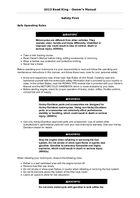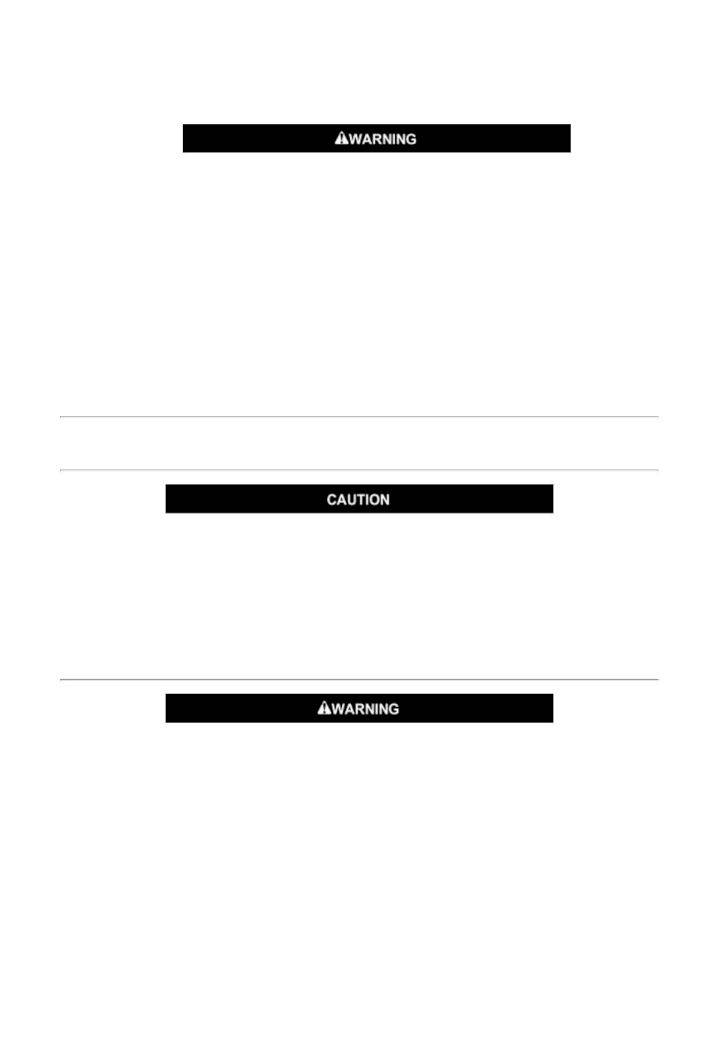adversely affect stability and handling, which could result
in death or serious injury. (00014b)
6. Check tire condition, pressure and motorcycle loading. Incorrect pressure and excessive
loading can lead to tire or wheel failure, and can affect handling and stability. Refer to
Specified Tires for correct inflation pressure.
Be sure headlamp, tail and stop lamp and turn signals are
operating properly before riding. Poor visibility of rider to
other motorists can result in death or serious injury.
(00478b)
7. Check all electrical equipment and switches including the headlamp, stop lamp, turn signals
and horn for proper operation.
8. Check for any fuel, oil or hydraulic fluid leaks.
9. Visually check drive belt for wear or damage.
10. Service your motorcycle as necessary.
Starting the Engine
General
The engine should be allowed to run slowly for 15 30
seconds. This will allow the engine to warm up and let oil
reach all surfaces needing lubrication. Failure to comply
can result in engine damage. (00563b)
Rolling the throttle before starting the motorcycle is unnecessary.
Starting
Shift transmission to neutral before starting engine to
prevent accidental movement, which could result in death
or serious injury. (00044a)
1. Turn ignition switch to IGNITION position. Do not roll the throttle.
2. See Right Handlebar Controls: Touring Models (typical). Turn the off/run switch to
RUN position.
NOTE:
The engine lamp will light for approximately 4 seconds and you will hear the fuel pump purr
for approximately 2 seconds as it operates to fill the fuel lines with gasoline.
3. Squeeze the clutch lever in against the handgrip.
4. Raise the jiffy stand (required on international models).
5. Press the starter button to start the motorcycle.




















































































































































































